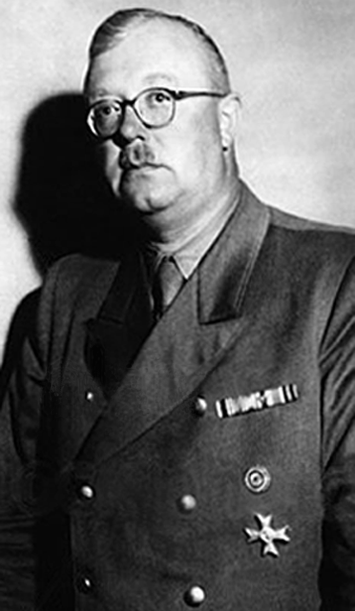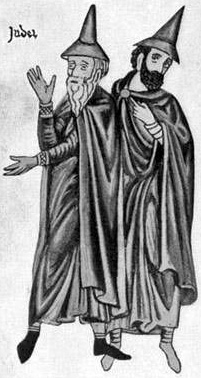|
Rumbula Massacre
The Rumbula massacre is a collective term for incidents on November 30 and December 8, 1941, in which about 25,000 Jews were murdered in or on the way to Rumbula forest near Riga, Latvia, during the Holocaust. Except for the Babi Yar massacre in Ukraine, this was the biggest two-day Holocaust atrocity until the operation of the death camps. About 24,000 of the victims were Latvian Jews from the Riga Ghetto and approximately 1,000 were German Jews transported to the forest by train. The Rumbula massacre was carried out by the Nazi ''Einsatzgruppe'' A with the help of local collaborators of the Arajs Kommando, with support from other such Latvian auxiliaries. In charge of the operation was Höherer SS und Polizeiführer Friedrich Jeckeln, who had previously overseen similar massacres in Ukraine. Rudolf Lange, who later participated in the Wannsee Conference, also took part in organizing the massacre. Some of the accusations against Latvian Herberts Cukurs are related to the c ... [...More Info...] [...Related Items...] OR: [Wikipedia] [Google] [Baidu] |
Riga
Riga (; lv, Rīga , liv, Rīgõ) is the capital and largest city of Latvia and is home to 605,802 inhabitants which is a third of Latvia's population. The city lies on the Gulf of Riga at the mouth of the Daugava river where it meets the Baltic Sea. Riga's territory covers and lies above sea level, on a flat and sandy plain. Riga was founded in 1201 and is a former Hanseatic League member. Riga's historical centre is a UNESCO World Heritage Site, noted for its Art Nouveau/Jugendstil architecture and 19th century wooden architecture. Riga was the European Capital of Culture in 2014, along with Umeå in Sweden. Riga hosted the 2006 NATO Summit, the Eurovision Song Contest 2003, the 2006 IIHF Men's World Ice Hockey Championships, 2013 World Women's Curling Championship and the 2021 IIHF World Championship. It is home to the European Union's office of European Regulators for Electronic Communications (BEREC). In 2017, it was named the European Region of Gastronomy. ... [...More Info...] [...Related Items...] OR: [Wikipedia] [Google] [Baidu] |
Otto Drechsler
Otto-Heinrich Drechsler (1 April 1895 – 5 May 1945) was the General Commissioner of Latvia for the Nazi Germany's occupation regime (Reichskommissariat Ostland) during World War II. In this capacity, he played a role in setting up the Riga ghetto and was implicated in the extermination of the Latvian Jews. He committed suicide on 5 May 1945, after being captured by the British forces. Early life Drechsler became an officer cadet (''Fahnenjunker'') in the Lübeck infantry regiment of the German Army in 1914. He was severely wounded and lost a leg. He was mustered out of the Reichswehr in 1920. Andreas Zellhuber: ''"Unsere Verwaltung treibt einer Katastrophe zu …" Das Reichsministerium für die besetzten Ostgebiete und die deutsche Besatzungsherrschaft in der Sowjetunion 1941–1945.'' Vögel, München 2006, S. 87, . (Quelle: Erich Stockhorst: ''Fünftausend Köpfe''. Velbert 1967, S. 112.) During the Weimar Republic Drechsler began the study of dentistry, and obtained the de ... [...More Info...] [...Related Items...] OR: [Wikipedia] [Google] [Baidu] |
Subsequent Nuremberg Trials
The subsequent Nuremberg trials were a series of 12 military tribunals for war crimes against members of the leadership of Nazi Germany between December 1946 and April 1949. They followed the first and best-known Nuremberg trial before the International Military Tribunal which concluded in October 1946. In contrast, the subsequent trials were conducted before U.S. military courts rather than an international court. They are also collectively known as the Nuremberg Military Tribunals. These trials dealt with German industrialists accused of using slave labor and plundering occupied countries, and high-ranking army officers accused of atrocities against prisoners of war. The subsequent trials were held in the same location, at the Palace of Justice in Nuremberg. Background Although it had been initially planned to hold more than just one international trial at the IMT, the growing differences between the victors of the second world war (the United States, United Kingdom, Fran ... [...More Info...] [...Related Items...] OR: [Wikipedia] [Google] [Baidu] |
Einsatzgruppe A
(, ; also ' task forces') were (SS) paramilitary death squads of Nazi Germany that were responsible for mass murder, primarily by shooting, during World War II (1939–1945) in German-occupied Europe. The had an integral role in the implementation of the so-called "Final Solution to the Jewish question" () in territories conquered by Nazi Germany, and were involved in the murder of much of the intelligentsia and cultural elite of Poland, including members of the Catholic priesthood. Almost all of the people they murdered were civilians, beginning with the intelligentsia and swiftly progressing to Soviet political commissars, Jews, and Romani people, as well as actual or alleged partisans throughout Eastern Europe. Under the direction of Heinrich Himmler and the supervision of SS- Reinhard Heydrich, the operated in territories occupied by the Wehrmacht (German armed forces) following the invasion of Poland in September 1939 and the invasion of the Soviet Union in June ... [...More Info...] [...Related Items...] OR: [Wikipedia] [Google] [Baidu] |
Massacre
A massacre is the killing of a large number of people or animals, especially those who are not involved in any fighting or have no way of defending themselves. A massacre is generally considered to be morally unacceptable, especially when perpetrated by a group of political actors against defenseless victims. The word is a loan of a French term for "butchery" or "carnage". A "massacre" is not necessarily a " crime against humanity". Other terms with overlapping scope include war crime, pogrom, mass killing, mass murder, and extrajudicial killing. Etymology The modern definition of ''massacre'' as "indiscriminate slaughter, carnage", and the subsequent verb of this form, derive from late 16th century Middle French, evolved from Middle French ''"macacre, macecle"'' meaning "slaughterhouse, butchery". Further origins are dubious, though may be related to Latin ''macellum'' "provisions store, butcher shop". The Middle French word ''macecr'' "butchery, carnage" is first re ... [...More Info...] [...Related Items...] OR: [Wikipedia] [Google] [Baidu] |
History Of The Jews In Germany
The history of the Jews in Germany goes back at least to the year 321, and continued through the Early Middle Ages (5th to 10th centuries CE) and High Middle Ages (''circa'' 1000–1299 CE) when Jewish immigrants founded the Ashkenazi Jewish community. The community survived under Charlemagne, but suffered during the Crusades. Accusations of well poisoning during the Black Death (1346–53) led to mass slaughter of German Jews and they fled in large numbers to Poland. The Jewish communities of the cities of Mainz, Speyer and Worms became the center of Jewish life during medieval times. "This was a golden age as area bishops protected the Jews resulting in increased trade and prosperity." The First Crusade began an era of persecution of Jews in Germany. Entire communities, like those of Trier, Worms, Mainz and Cologne, were slaughtered. The Hussite Wars became the signal for renewed persecution of Jews. The end of the 15th century was a period of religious hatred that ... [...More Info...] [...Related Items...] OR: [Wikipedia] [Google] [Baidu] |
Latvian Jews
The history of the Jews in Latvia dates back to the first Jewish colony established in Piltene in 1571. Jews contributed to Latvia's development until the Northern War (1700–1721), which decimated Latvia's population.R. O. G. Urch. Latvia: Country and People. London, Allen & Unwin. 1938. The Jewish community reestablished itself in the 18th century, mainly through an influx from Prussia, and came to play a principal role in the economic life of Latvia. Under an independent Latvia, Jews formed political parties and participated as members of parliament. The Jewish community flourished. Jewish parents had the right to send their children to schools using Hebrew as the language of instruction, as part of a significant network of minority schools. World War II ended the prominence of the Jewish community. Under Stalin, Jews, who formed only 5% of the population, constituted 12% of the deportees.Swain, G. Between Stalin and Hitler. Routledge, New York. 2004. In comparison, 90% ... [...More Info...] [...Related Items...] OR: [Wikipedia] [Google] [Baidu] |
Extermination Camp
Nazi Germany used six extermination camps (german: Vernichtungslager), also called death camps (), or killing centers (), in Central Europe during World War II to systematically murder over 2.7 million peoplemostly Jewsin the Holocaust. The victims of death camps were primarily murdered by gassing, either in permanent installations constructed for this specific purpose, or by means of gas vans. The six extermination camps were Chełmno, Belzec, Sobibor, Treblinka, Majdanek and Auschwitz-Birkenau. Auschwitz and Majdanek death camps also used extermination through labour in order to kill their prisoners. The idea of mass extermination with the use of stationary facilities, to which the victims were taken by train, was the result of earlier Nazi experimentation with chemically manufactured poison gas during the secretive Aktion T4 euthanasia programme against hospital patients with mental and physical disabilities. The technology was adapted, expanded, and applied in w ... [...More Info...] [...Related Items...] OR: [Wikipedia] [Google] [Baidu] |






